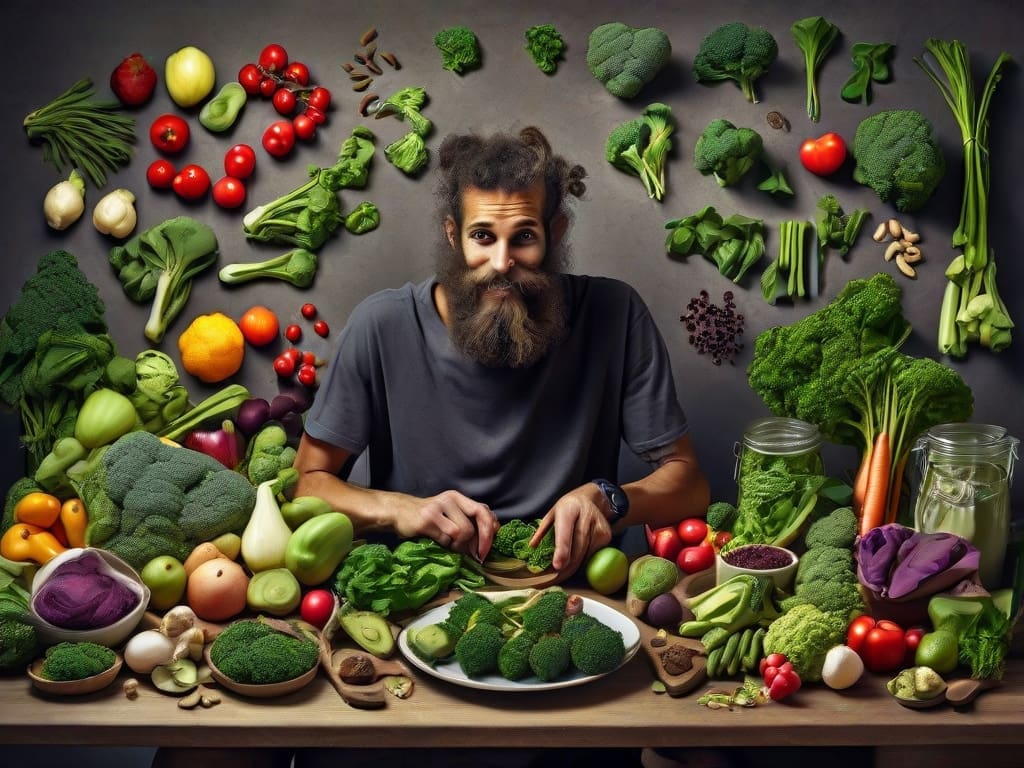As a parent, I always worry about what my children eat. Kids diets directly impact their growth, energy levels, and overall health. Managing a balanced diet for children can be overwhelming, with various options available, from Mediterranean to gluten-free.
Before starting any children’s diet, CONSULT WITH A PEDIATRICIAN!
Understanding what each diet entails and its potential effects on kids is crucial. This guide aims to break down the complex world of diet and kids, focusing on the risks and benefits of popular diets. By the end, you’ll have a clearer picture of how to make informed decisions about your child’s nutrition. Let’s dive in and explore the ultimate guide to kid diets!
Why Kids Diets Are Important
As a parent, I’ve learned that my kids diets are key to their growth and development. A balanced diet gives them the energy to play, learn, and stay active. Good nutrition also helps prevent illnesses like obesity, diabetes, and even some behavioral issues.
My kids sleep better and have more stable moods when they eat well. It’s not just about physical health; their mental well-being improves, too. Teaching healthy eating habits early on sets them up for a lifetime of good choices. In short, a proper diet is the foundation for their overall health and happiness.

Common Risks Associated with Kids Diets
As a parent, I know it’s crucial to be aware of the risks linked to diet choices for kids. One of the main risks is not getting balanced nutrients. Kids need proteins, carbs, fats, vitamins, and minerals for growth. Another concern is potential food allergies, which can cause serious reactions. Sometimes, restrictive diets can lead to deficiencies, like iron or calcium shortages.
These can impact their bone health and energy levels. Overeating or under-eating is another risk, affecting their weight and overall health. Lastly, there’s the danger of developing an unhealthy relationship with food. It’s crucial to balance healthy eating with flexibility and enjoyment.
Mediterranean Diet for Kids
The Mediterranean diet is one I’ve found to be both healthy and family-friendly. This diet emphasizes fruits, vegetables, whole grains, and lean proteins like fish and chicken. It’s rich in healthy fats from sources like olive oil and nuts.
What I love about this diet is its balance and variety. It incorporates many different food groups, ensuring my kids get a wide range of nutrients. Plus, adapting to our family meals is easy without making drastic changes.
The Mediterranean diet can help kids get essential vitamins and minerals, supporting their overall growth and development in a natural, enjoyable way. This can be one of the best kids diets. But as always, consult with a medical professional first.
Mediterranean Diet Overview
The Mediterranean diet is a favorite in our household. It focuses on fresh, wholesome foods like fruits, vegetables, whole grains, and lean proteins such as fish and chicken. Healthy fats from olive oil and nuts add a flavorful touch.
I appreciate that these kids diets don’t emphasize restrictions but rather balance and variety. Simple dishes like grilled fish with a salad or veggie pasta make mealtime enjoyable for everyone. The diet also includes dairy in moderation, primarily from yogurt and cheese. Seasoning with herbs instead of salt enhances the natural flavors of the ingredients. Overall, it’s satisfying to nourish my kids with essential nutrients.
Benefits of Mediterranean Diet for Children
The Mediterranean diet is a great option for my kids. It offers balanced nutrition from a variety of food groups. I see an increase in their energy levels when they eat more fruits, vegetables, and whole grains.
Healthy fats from olive oil and nuts help their brain development. Lean proteins like fish and chicken support muscle growth. The diet’s emphasis on fresh ingredients makes it easier to prepare healthy meals.
My kids also enjoy the taste, which means fewer mealtime battles. Best of all, following this diet, reduces the risk of childhood obesity and chronic diseases. Overall, it’s a well-rounded approach to healthy eating.
Vegetarian and Vegan Kids Diets
I explain vegetarian and vegan diets to my kids in a simple way. Vegetarians don’t eat meat but can enjoy dairy and eggs. Vegans, on the other hand, avoid all animal products, including meat, dairy, and even honey. Their diets focus on fruits, vegetables, grains, nuts, and seeds.
Transitioning can be easy with plenty of plant-based alternatives available. I find it essential to explain the reasons behind these kids diets. Whether for health, environment, or ethics, knowing why helps kids stay committed.
Nutritional Risks and Benefits of Vegetarian and Vegan Diets for Children
There are both benefits and risks. Plant-based diets offer high fiber and low saturated fats. They can lower the risk of obesity and heart disease. However, getting enough protein, iron, and vitamin B12 can be tricky.
I always recommend consulting a pediatrician to ensure balanced nutrition. Adding fortified foods or supplements can help. Monitoring the kids diets closely ensures they get all the necessary nutrients. With proper planning, these diets offer healthy growth options for kids.
Gluten-Free and Dairy-Free Kids Diets
When I chose a gluten-free diet for my child, I noticed immediate improvements in digestion. Gluten can be hard on kids with sensitivities, causing tummy issues. Similarly, dairy-free options became essential due to lactose intolerance.
Cutting out dairy helps reduce bloating and discomfort. These diets mean constant label-checking, but I’ve found tasty alternatives like almond milk and gluten-free pasta.
Balanced meals are still achievable with fruits, veggies, and lean proteins. Ensuring my child gets enough calcium and fiber is crucial. I supplement with fortified foods when needed. The change in my child’s energy and mood makes the effort worthwhile.
Understanding Gluten-Free and Dairy-Free Diets
When I decided to put my child on a gluten-free diet, it was due to digestive issues. Gluten is a protein in wheat, barley, and rye. It can cause bloating and discomfort in sensitive kids. Dairy-free means eliminating lactose, which is in milk and cheese.
Lactose intolerance can lead to tummy troubles. We replaced cow’s milk with almond or soy milk. Reading food labels became a norm. Gluten-free pasta and dairy-free yogurt were the go-to options. Fresh fruits and vegetables are always safe choices. Lean meats are great for protein. It took effort, but my child’s mood and health improvements were significant.

Impact on Children’s Health and Development
Switching my child to a gluten-free and dairy-free diet had a noticeable impact on their health. Within weeks, I saw improvements. No more frequent stomachaches. Energy levels increased. Mood swings became less frequent. Their digestion seemed smoother. The focus in school improved, with fewer complaints of discomfort.
It’s crucial to maintain balanced nutrition. I was mindful of vitamins and minerals. I ensured they got enough calcium from non-dairy sources, like leafy greens. I added gluten-free whole grains to their meals. Protein sources included lean meats and legumes. Regular check-ups with our pediatrician helped us stay on track. Overall, it was worth the effort for their better health and development.
Paleo as Kids Diets
The Paleo diet focuses on whole foods, including meats, fish, fruits, vegetables, nuts, and seeds. It avoids processed foods, grains, dairy, and legumes. The idea is to eat like our ancestors, mimicking a pre-agricultural diet.
Paleo Diet Basics
The Paleo diet revolves around consuming whole foods. When I follow this plan, I eat meats, fish, fruits, vegetables, nuts, and seeds. It eliminates processed foods, grains, dairy, and legumes. The idea is to replicate what our ancestors ate before farming existed. This means focusing on natural, unprocessed items.
The emphasis is on nutrient-dense foods. This diet encourages lots of fresh produce and high-quality protein sources. Processed sugars and artificial additives are strict no-nos. By aiming for a pre-agricultural dietary pattern, it seeks to optimize health and well-being.
In summary, it’s about going back to the basics and making diet choices that our bodies are evolutionarily designed for.
Evaluating the Pros and Cons for Children
I’ve explored the Paleo diet’s potential benefits and pitfalls for kids. On the plus side, it emphasizes whole foods, which are nutrient-rich. This can promote healthy growth and development. The focus on fruits, vegetables, and lean proteins offers a well-rounded diet.
However, there are drawbacks. Eliminating dairy may lead to calcium deficiencies, which are crucial for bone health. Skipping grains might reduce essential fiber intake, causing digestive issues. The restrictive nature can make social situations tricky.
While the Paleo diet has merits, it’s important to ensure kids get a balanced mix of nutrients. Consulting a pediatrician before making significant dietary changes is always wise.
Conclusion
In conclusion, it’s clear that kids diets are crucial for their growth and health. Every diet, whether Mediterranean, vegetarian, vegan, gluten-free, or Paleo, has unique pros and cons.
The Mediterranean diet, for instance, is rich in nutrients but might be challenging to maintain. Vegetarian and vegan diets are excellent for plant-based nutrition but require careful planning to avoid deficiencies. Gluten-free and dairy-free diets can help with specific intolerances but may limit some essential nutrients.
The Paleo diet offers whole foods but can be overly restrictive. Ultimately, balance is key. Consulting with a pediatrician before making any diet changes is always smart. This ensures that kids get all the nutrients they need.
Key Takeaways on Kids Diets
As I explored various kids diets, I found each has its unique strengths and challenges. The Mediterranean diet offers balanced nutrition but needs dedication. Vegetarian and vegan options provide plant-based goodness but require vigilance against nutrient gaps. Gluten-free and dairy-free diets cater to specific needs but can limit essential vitamins. The Paleo diet promotes whole foods yet feels restricting for kids.
Balance stands out as crucial. I learned that no diet is perfect, but understanding their benefits and risks helps people make informed choices. Consulting with a pediatrician ensures my child gets comprehensive nourishment from any diet I consider. Being aware and proactive makes a huge difference in their growth and health.
Expert Recommendations and Best Practices
I’ve learned that consulting a pediatrician is crucial before starting any diet for children. Professionals can provide personalized advice tailored to my kid’s needs. I find it helpful to focus on balanced meals, incorporating a variety of nutrients. It’s also important to avoid overly restrictive diets unless medically necessary.
Monitoring my child’s growth and energy levels helps ensure they’re getting adequate nourishment. I make sure to introduce new foods gradually, which allows for better adaptation and acceptance. Reading labels and staying informed about nutritional content simplifies making healthier choices. Finally, involving my child in meal planning and preparation makes the journey enjoyable and educational for both of us.









Be First to Comment